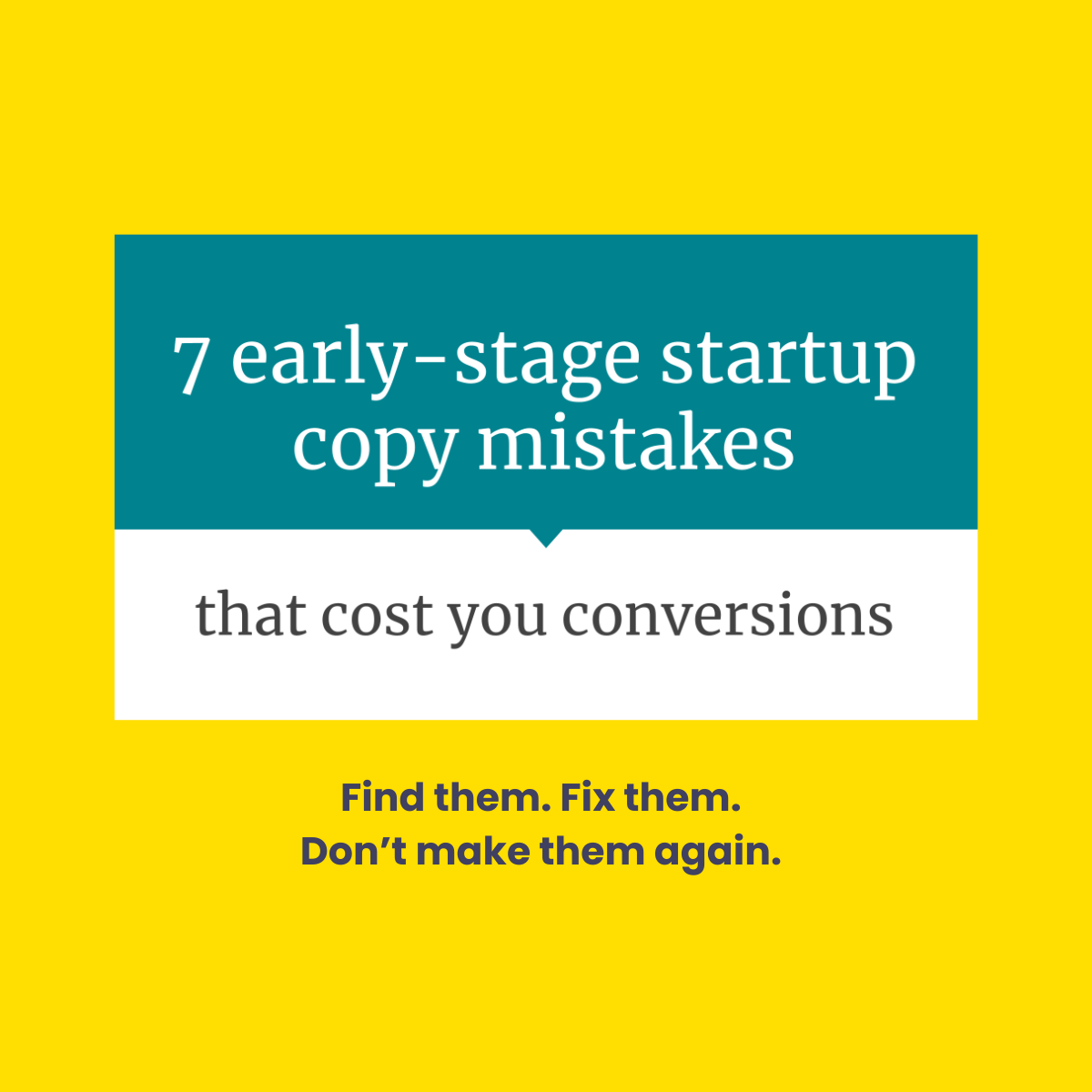How to audit your B2B SaaS website and improve conversions
4 website audit shortcuts to diagnose what’s wrong instead of rewriting everything
The whole point of the “Talk to your customers” exercise is “Understand what your customers care about, so that you can present your product in a way that makes sense to them and encourages them to convert.”
In some cases, startups have zeroed in on their messaging, but the website is still not converting.
When this happens, observing how website visitors behave can help fix the website copy and achieve a conversion increase.
4 cases when you don’t need an extensive messaging update to improve your website conversions:
Illogical page structure
Confusing website flow
Hidden (key) information
Irrelevant information (from visitors’ perspective)
One notable exception is a combination of a high bounce rate and low scroll depth — a sign that something is tragically wrong right in the hero section. In this case, the first step is figuring out what it is — and how to fix it.
Outside of that particular case, the first — and easiest — step before making copy updates to improve conversions is running a website audit based on Google Analytics data and Hotjar (or similar) session recordings, heatmaps, and scroll maps. Here’s why it’s a great start:
Shows real-world prospects interacting with your website
Provides an (almost) immediate list of ideas of how to improve the website
Raises more targeted questions to drive additional research, if necessary
Prepping for the audit: 1 thing to do before you start
Before jumping in, make sure you’re clear on the assumptions behind the copy decisions (so that you can see when real-world visitors’ behavior differs from what you’ve been expecting), as well as background information about the visitors, from stages of awareness to traffic sources that the website was developed for (especially if you’re sending ad traffic to your homepage).
Once you have this baseline in place, it’ll be easier to see how the reality is different.
Running your website audit: what you’re looking for
Illogical page structure
Are visitors’ expectations met, or does it look like they’re scrolling around trying to make sense of the information on the page?
Are they clicking the on-page CTAs, or do they use menu links to navigate around the website?
Are there sections not being read? Do they need to be on the page? If yes, how can they be made more appealing for visitors?
Confusing website structure
Where do website visitors tend to get stuck or distracted? How can this be fixed?
Are there clear, well-defined steps that are not working?
Hidden (key) information
Do (most) visitors appear to get to the page or page section that contributes to conversions?
Does it look like visitors can’t find what they’re looking for (for example, making multiple U-Turns)?
Irrelevant information
Especially for longer pages, are there sections that are scrolled over?
What are the least-clicked / least-read sections? Why might they be not as popular as other page sections?
Analyzing your findings: is this enough to make meaningful changes?
The hardest part: knowing when what you’ve learned is good enough — and recognizing when you need to do more research to know what needs to be changed.
Quick rule of thumb:
Structure (page) = safe to change for obvious design issues; approach with caution if audience changed or it’s unclear why the structure is not working for the old audience
Structure (website) = safe to change, especially if there’s a clear set of steps that visitors need to follow to conversion
Hidden (key) information = safe to change if it’s hidden under a false bottom (or because of formatting); run exit intent surveys before changing if there’s no clear reason for visitors’ frustration
Irrelevant information = the hardest one; in most cases, it’ll be clear that the copy is not working, but not clear exactly why. Exit intent surveys may be a good start, but running a messaging panel or customer interviews may be a more effective approach.
Let’s uncover conversion-boosting opportunities on your website
I help B2B SaaS startup founders and marketers get more traction with research-driven conversion copy — without slowing down their growth initiatives.
Hire me for:
Website audit to find & fix conversion blockers
Day rates to optimize your landing pages, web copy, or email sequences for more clicks and signups



![[S2E6] How to build a content ecosystem to convert and support users](https://images.squarespace-cdn.com/content/v1/510fa084e4b060f86e73735a/1750284561646-AA8WDFHRFZ32GQO5GI51/S2E6+Podcast+Cover+visuals.png)
![[S2E5] Practical Guide to Wynter Messaging Tests](https://images.squarespace-cdn.com/content/v1/510fa084e4b060f86e73735a/1747226672649-1AU6KQD4RIGSNSIIQLGW/Solo_episode_cover.png)
![[S2E4] How to: message testing on a budget](https://images.squarespace-cdn.com/content/v1/510fa084e4b060f86e73735a/1744221834434-TF0URFQBJNYQPPMKQNHK/alex_atkins_cover_image.png)
![[S2E3] How to: positioning](https://images.squarespace-cdn.com/content/v1/510fa084e4b060f86e73735a/1742493000706-NG82ZT4YFEM2AFCDG03N/S2E3_Josh+Garofalo_COver+Image.png)
![[S2E2] How to find winning angles for your competitor pages](https://images.squarespace-cdn.com/content/v1/510fa084e4b060f86e73735a/1740671619617-YYWZU1UAQOHY3RDFNTIC/YDGW_S2E2.png)

![[S2E1] How to make research (like JTBD) a part of your company’s business processes with Eric White, ponder*](https://images.squarespace-cdn.com/content/v1/510fa084e4b060f86e73735a/1739463855416-52VCO2K3A62DVPIX2OWX/Eric_White_Cover_Image.png)
